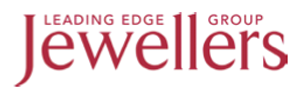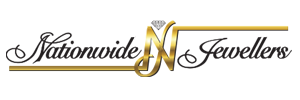Collective buying power has long been a successful strategy for independent retailers, especially jewellers competing against larger groups and chain stores, but as consumers change and retailing evolves, one wonders whether the business model is just as relevant today. Is safety in numbers still the name of the game?
Jeweller’s 2016 biennial Buying Group Report explores whether the local buying groups, Leading Edge Jewellers, Nationwide Jewellers and Showcase Jewellers, are maintaining their foothold in the market and if so, how?
This special investigation shows that the groups collectively represent a total of 942 stores – 830 in Australia and 112 in New Zealand. Interestingly, while overall store count has had a slight decline since 2014, the number of members has increased in Australia and remained the same in New Zealand. It’s arguably a telling result given the current difficult trading conditions.
SAFETY IN NUMBERS
The buying group model gained a footing within the Australian jewellery industry in the early 1980s. It was a concept that coincided with the rise of shopping centres and, in turn, the large chain stores, which had size and therefore purchasing power on their sides when it came to negotiating price.
Independent jewellers turned to groups, determined to increase their purchasing strength via collective buying. For many, it was the key to maintaining competitiveness, and safety in numbers was the name of the game.
As retailing evolves so too do the demands from all levels of the industry. Today’s retail sector faces a myriad of challenges – begging the question of whether the buying group concept is just as relevant today as it was in the era of leg warmers and neon-coloured parachute pants.
Russell Zimmerman, executive director of peak retail industry body Australian Retailers Association, is adamant that it is.
“Buying groups for small and medium-sized retailers are as important as they have ever been,” he states, explaining that the ability to purchase limited amounts of product at a competitive price remains a major benefit for the independents.
Probably not surprising but surely the buying groups – specifically Leading Edge Jewellers, Nationwide Jewellers and Showcase Jewellers in Australia and New Zealand – aren’t resting on their laurels.
Retailers are forever lectured on why they should adjust their business models to keep up with the changing retail landscape so it would make sense that the buying groups, which collectively represent almost 950 stores, are doing the same.
According to National Retail Association CEO Trevor Evans, the assumption rings true. He explains there is little doubt that the sophisticated branding strategies of chain stores have caused significant challenges for small businesses. Thus, the buying groups have also adapted, concentrating heavily upon retail marketing.
Further to this, Michael Dyer of jewellery software and consulting business Retail Edge Consultants says the reasons why buying groups remain important are as wide as they are varied. He points to additional services, which include everything from marketing resources to staff training and lease negotiation assistance.
Dyer warns, however, that the challenge lies in ensuring these offerings are relevant and current in a marketplace where change is not only constant but also rapid. Since Jeweller’s last analysis of buying groups in 2014, a few movements have taken place across Australia and New Zealand. Overall store count has slightly declined in the past two years; however, interestingly, the number of members has increased.
It’s a telling result given the difficult trading conditions over the past two years and it suggests buying groups are succeeding in their quest to remain relevant.
Nationwide managing director Colin Pocklington states that marketing resources continue to be a major drawcard for members of his buying group.
“The continued flat trading in the economy has made our various marketing services even more beneficial to independent jewellers,” Pocklington explains, adding, “A lot of retailers realise that marketing is the key to success and that groups can provide ideas and resources to increase sales.”
Leading Edge general manager Joshua Zarb acknowledges that general retail assistance in areas such as human resources, marketing, business consultancy and stock assistance is now one of the most important reasons retailers join his group, possibly more important than group-purchasing benefits.
“The actual [price] discount, while important, is probably the least of the key deciding factors nowadays,” Showcase general manager Carson Webb agrees.
“Mainly it comes down to the resources, assistance and tapping into the things that only a major chain or significant franchise could obtain based on numbers.
“If you don’t have anything that gives them an advantage or benefit they couldn’t normally tap into then, in my opinion, any buying group’s days are numbered.”
Brand battle
Jewellers have faced no shortage of challenges in the past two years but maintaining independence while catering to increased demand for branded jewellery is an ongoing struggle at the top of each buying group’s agenda.
“Brands used to represent about 10 per cent of sales in a jewellery store,” Pocklington says. “In the last 15 years, this has grown to over 50 per cent – in line with international trends – so it is a major issue.”
He explains that increased consumer demand for fashion-based products brings benefits and risks – the benefits include extra sales and good stock-turn; the risks include the potential for stock levels to expand ‘uneconomically’ as a result of frequent new product releases and stock obsolescence.
“A retailer can still have a strong store brand,” Pocklington adds. “Being known as a stockist of the latest and most popular jewellery brands can be a strength. The most important issue is that retailers need to review brand performance more frequently and make changes based on comparative performance.”
Webb lists the management of branded product as a serious concern.
“I believe one of the critical issues for retailers and also suppliers is the money taken out of the general ‘spend’ due to the new releases or stock purchasing expectations from the brands,” he states. “The brands will require this but it takes a lot of the general spend for the year out of the market as it becomes already allocated and there’s only so much to go around.”
Webb says retailers can successfully walk the fine-line of embracing branded merchandise while not forsaking high-end product as long as they have a plan.
“There’s no way a store with the general KPIs of a fine jewellery store – rents, wages, security – can afford to only be selling a mash-up of fashion brands based on the generic achieved mark-ups these days,” he explains. “Committing to a set brand strategy – quality versus quantity – and doing it better than most, with a strong focus on fine jewellery, is a must for long-term success.”
Webb adds that the industry is shrinking, which makes having a point of difference and focus more critical than ever: “We are finding many of our members are actually growing the quality of their business. For example, as a new housing development goes in, they can tap into that early and ride it out while in the infancy stage to then enjoy ‘owning’ the town – being known as ‘the jeweller’ again!”
Zarb expands on the notion that jewellers must not lose sight of their own brands, stating, “The biggest strength the independents have is their own brand identity and we go to great lengths to ensure that we do not dilute this for our members in any way.”
He uses the fact that his group’s marketing packages are store-specific as an example.
“I firmly believe that independent jewellers still have a bright future as long as they accept what is happening in the marketplace around them,” Zarb adds.
“First and foremost, independents need to support their number one brand and point of difference – the name on the door. They have the ability to access brands that chain stores can’t access and they have the ability to access, sell and promote diamonds that fit the needs of the business.”
Diamond in the rough
Ensuring retailers receive their fair share of the diamond pie continues to be a focus for Nationwide. The group has conducted Antwerp buying trips for 17 years and introduced a specific Antwerp marketing program in 2009 as a way to help members increase market share.
Pocklington says the initiative, including a detailed marketing campaign using materials and procedures supplied by Nationwide, has assisted a large number of members to substantially increase diamond sales – some by more than $100,000 in a year. In addition, Nationwide has secured exclusive diamond brands Tolkowsky and Astralis, which can be used as unique selling propositions (USPs) by members. Showcase is also investing energy into helping retailers leverage branded diamonds and diamond jewellery. The group acquired the well-known Passion8 brand in 2014 after previous owner Miller Diamonds went into liquidation and recently announced a partnership with Rio Tinto to produce the diamond jewellery range called Dreamtime Diamonds.
“We concentrate on resources for our retailers to increase their fine jewellery and diamond focus,”Webb explains.“This focus is lacking for various reasons in Australia and New Zealand; it’s rare these days to see a wonderfully-marketed independent diamond or fine jewellery store.”
Webb says it’s a similar story to the De Beers advertisements in the early 1990s, which significantly helped to drive all diamond jewellery sales at the time.
“The brands do a fabulous job of this for retailers but what happens to the fine jewellery category?” he asks. “Fashion comes and goes. It’s very fickle indeed, as is electronic gadgetry, but we are still dealing with precious metals with high outgoings and that’s a very important thing to remember for our longevity.”
Pocklington says another structural change occurring in the industry is the rise in the number of consumers seeking involvement in the design of their jewellery, a trend no doubt influenced by the increasing use of CAD/CAM.
“We provide an extensive range of marketing material – printed and social media – to help members promote this service, and it is linked with our Antwerp marketing,” Pocklington explains of how Nationwide helps members to meet this demand.
He also indicates that the group is set to introduce additional benefits to help manufacturing jewellers in the design and manufacture of custom orders, the details of which will be announced at the group’s annual conference in March.
Tackling ongoing challenges
As previously stated, retailers are faced with a seemingly endless list of challenges and each buying group leader is adamant that these struggles are also their own.
Zarb points to the ongoing plight of retail leasing costs.
“One of the biggest enemies that independent jewellers face is increasing rent and the pressure this places on businesses,” he says. “This is something that we need to work on as an industry. I hate seeing great retailers close because unrealistic rents do not allow for a rent renewal.”
Assisting members to embrace the digital world has also been a focus for the groups for a number of years.
“Modern retailing is difficult as you need to have a strong digital footprint as well as offering traditional retail acumen,” Zarb explains.
One of the most pressing needs of the buying groups in recent times has been to develop online strategies that cater to the wide-ranging needs of members.
Today all three groups provide sophisticated, customisable offerings.
“We have been extremely fortunate at Leading Edge over the past two years; we have taken on record numbers of new stores during this period and we have had the two best years of trade on record,” Zarb says. “We have used this growth to aggressively increase our resources available to all members. As an example, we have invested heavily in digital resourcing and we offer a complete business-to-business (B2B) and business-to-consumer (B2C) digital communications and loyalty program that enables stores to grow and communicate with their database via email, SMS and social media.”
Webb says he is also proud of Showcase’s efforts in this area, explaining that the group introduced innovative e-commerce websites, B2B portal integration and digital marketing services that can be tailored to suit individual member needs in 2015.
For Nationwide, the focus lies in finalising its revamped member website.
“We hope to be able to preview some of the new features and resources for members at our March conference,” Pocklington says. “Members will have a comprehensive range of information on marketing, products, management, training and much more at their fingertips.”
As part of Nationwide’s digital offering, Pocklington has also announced the launch of a social media ‘library’, which provides members with templates, posts and content that can be used across various social media platforms. The library has been designed to help members promote business initiatives like in-store VIP events, sales and buying trips.
The road ahead
To reiterate Dyer’s point, the current marketplace is one where “change is not only constant but also rapid”. There may be a few pundits critical of the buying groups’ influence over the industry but there are others who will attest that buying groups have helped independents to remain resilient against the large chains and brand boutiques. “The message we try to get across to jewellers is, ‘We are on your side,’” Pocklington states.
“If a member has a problem with products, marketing, insurance, landlords or anything else then Nationwide is here to help.”
Zarb explains that his group is committed to expanding to more than 200 stores and is “more motivated than ever to take Leading Edge Group into new areas”.
“We have always operated on the idea that members and suppliers are not numbers; they are friends,” he says. Webb remains both pragmatic and optimistic when looking to the future.
“We [the board and I] acknowledge it would be unprofessional to not recognise the many industry challenges we face and this year will be tough; however, it’s certainly not doom and gloom,” he says. “In fact, we see it as an amazing opportunity of change and growth to be better and to grow stronger. We have excellent retailers within our group, both in country and metro regions, and together we can overcome anything.
“We’re retailers and in retail you’re only as good as today’s figures, so what are you doing about it?”
It seems safety in numbers remains the name of the game for more reasons than one.
*All figures were correct as at January 31, 2016.
| BUYING GROUP REPORT 2016: Click the logos to meet them now |
| 


|
A comprehensive analysis of the three Australian jewellery buying groups
|